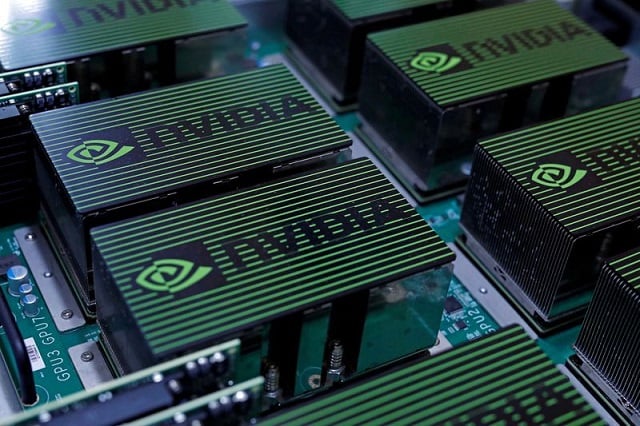Nvidia earned its $2.2 trillion market cap by making artificial intelligence chips that have become the lifeblood powering a new era of generative AI developers from startups to Microsoft, OpenAI and Google parent Alphabet.
Almost as important to hardware is the company’s computer code for nearly 20 years, which helps make it nearly impossible to compete with the company. More than 4 million global developers rely on the Nvidia CUDA software platform to build AI and other applications.
Now a coalition of tech companies that includes Qualcomm, Google and Intel plans to loosen Nvidia’s grip by going after the chip giant’s secret weapon: the software that keeps developers tied to Nvidia chips. They’re part of a growing group of financiers and companies hacking away at Nvidia’s AI dominance.
“We’re actually showing developers how you migrate from the Nvidia platform,” Vinesh Sukumar, Qualcomm’s head of AI and machine learning, told Reuters in an interview.
Starting with a technology developed by Intel called OneAPI, the UXL Foundation, a consortium of technology companies, plans to build a suite of software and tools capable of powering several types of AI accelerator chips, the group’s executives said. Reuters. The open source project aims to make computer code run on any computer, regardless of what chip and hardware is driving it.
In his ruling, the judge said it was “obvious” that Musk sued the Center to Combat Digital Hate because he didn’t like being accused of allowing hate speech to grow on his platform X – formerly known as Twitter – and he. thought the CCDH research would damage the platform’s image and scare off advertisers.
Also read: Thousands of freelancers set to benefit as Pakistan’s largest IT park gets go-ahead
“It’s specifically about — in the context of machine learning frameworks — how do we create an open ecosystem and drive productivity and hardware choice,” Google director and chief technologist for high-performance computing Bill Magro told Reuters in an interview. Google is one of the founding members of UXL and is helping to determine the technical direction of the project, Magro said.
The UXL Technical Steering Committee is preparing to write technical specifications in the first half of this year. Engineers plan to refine the technical details to an “advanced” state by the end of the year, executives said. These executives emphasized the need to build a solid foundation that includes contributions from multiple companies that can also be deployed on any chip or hardware.
In addition to the original companies involved, UXL will be reaching out to cloud computing companies such as Amazon.com and Microsoft Azure, as well as other chipmakers.
Since its launch in September, UXL has already begun accepting technical contributions from third parties, which include foundation members and outsiders interested in using the open source technology, executives involved said. Intel’s OneAPI is already available, and the second step is to create a standard computing programming model for AI.
UXL plans to put its resources into solving the most pressing computing challenges dominated by a few chipmakers, such as the latest AI and high-performance computing applications. These early plans contribute to the organization’s long-term goal of acquiring a critical mass of developers for its platform.





